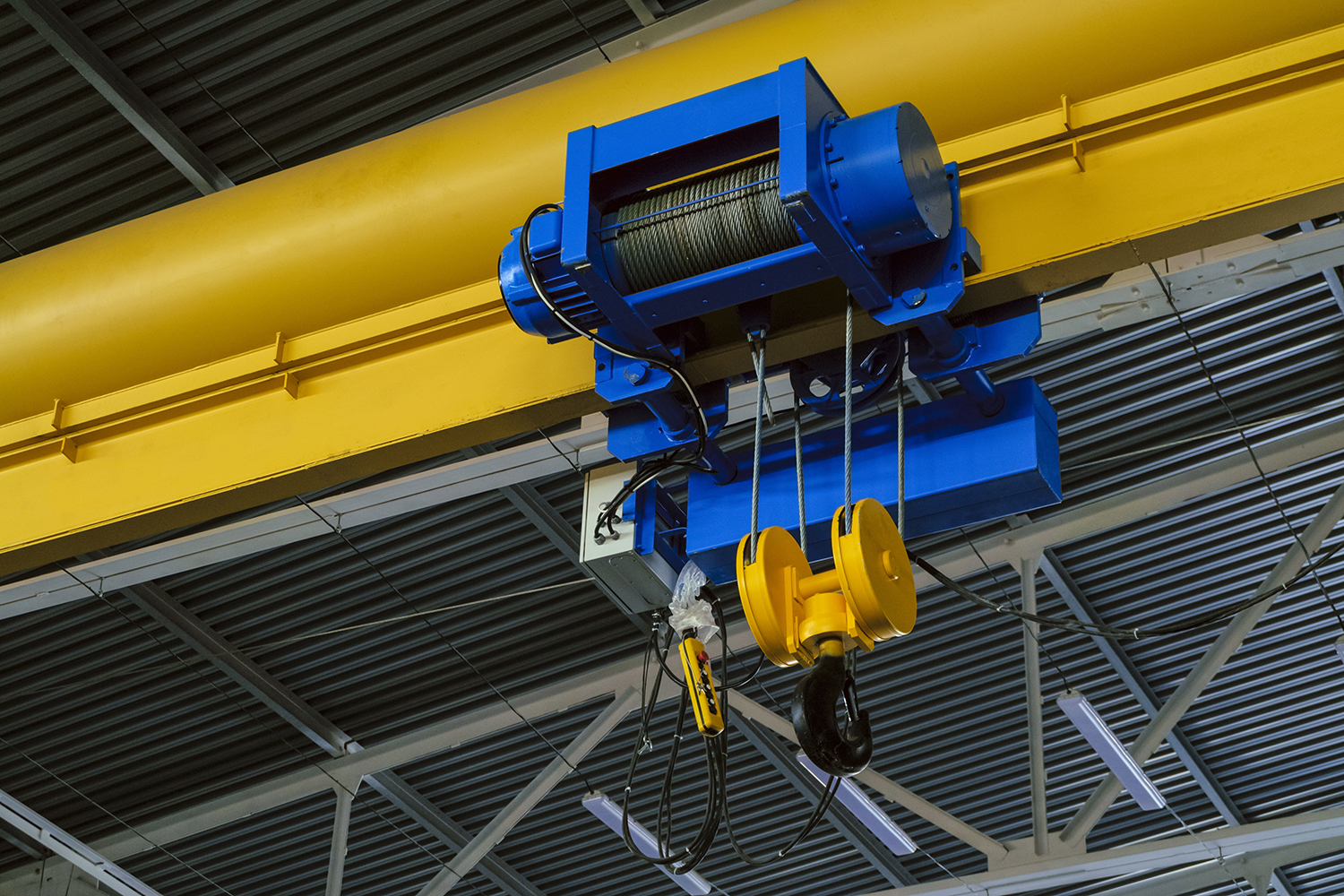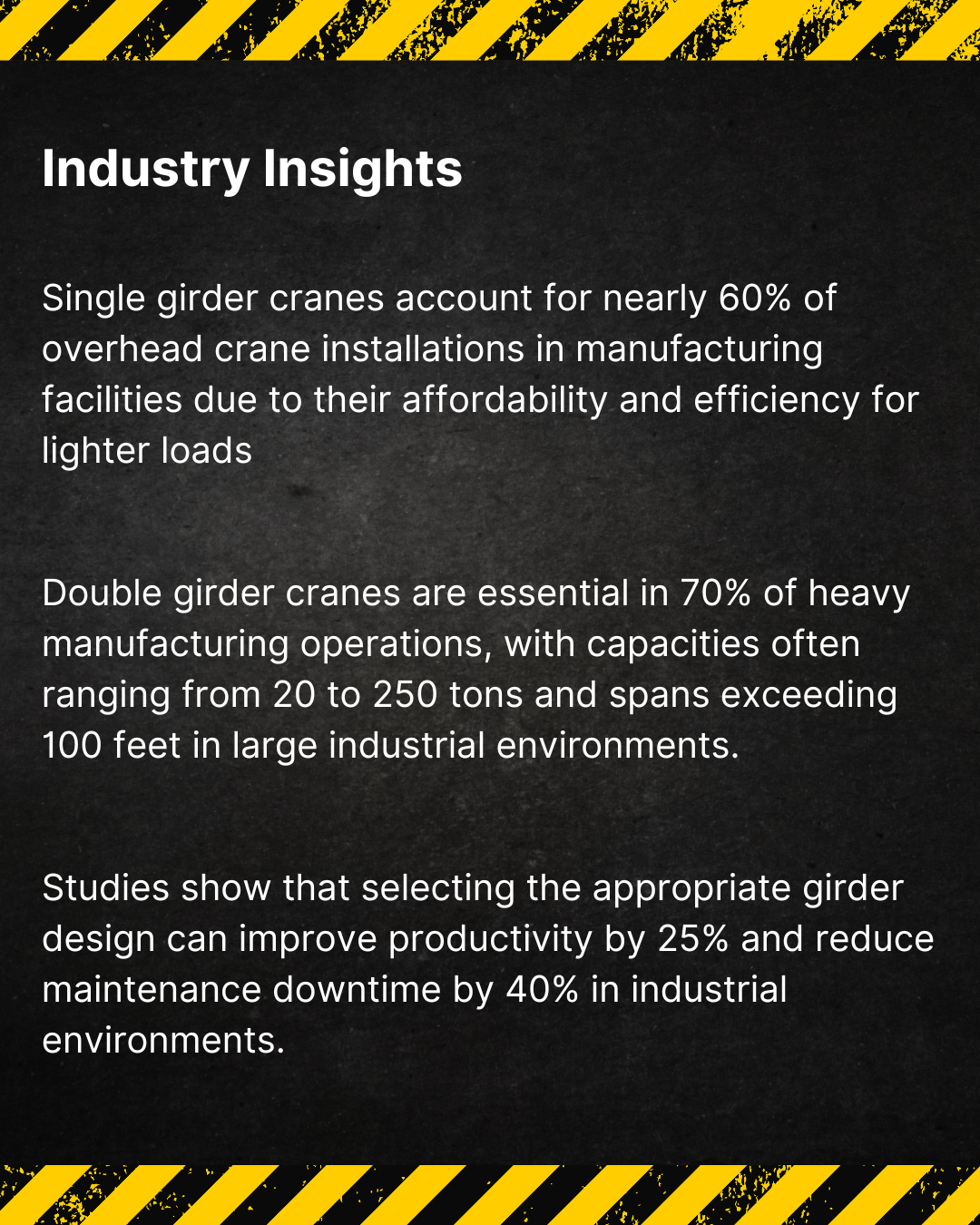Single Girder vs. Double Girder Cranes: Which One Do You Need?
Single Girder vs. Double Girder Cranes: Which One Do You Need?
When selecting an overhead crane for your operation, one of the most critical decisions is choosing between a single girder and a double girder crane. Both crane types have unique advantages, and understanding these differences will help ensure you select the most efficient, cost-effective, and safe solution for your lifting needs. In this blog, we will break down the key features, advantages, disadvantages, and applications of single girder and double girder cranes to help you make an informed decision.
What Is a Single Girder Crane?
A single girder overhead crane uses one main beam (girder) to support the trolley and hoist. The hoist typically runs on the bottom flange of the girder. This crane design is known for its simplicity, cost-effectiveness, and ease of installation.
Advantages of Single Girder Cranes
Cost-Effective: Requires fewer materials and components, making it more affordable.

Lightweight Design: Easier and quicker to install, reducing labor costs.
Low Headroom Requirements: Suitable for facilities with height restrictions.
Reduced Maintenance Costs: Simpler design leads to easier maintenance.
Energy Efficient: Lighter weight reduces power consumption.
Disadvantages of Single Girder Cranes
Lower Load Capacity: Typically limited to 15 tons.
Shorter Span Lengths: Best suited for spans under 65 feet.
Limited Hook Height: The hoist sits below the girder, reducing lift height.
Best Applications for Single Girder Cranes
Light manufacturing
Warehousing
Maintenance facilities
Small workshops
What Is a Double Girder Crane?
A double girder overhead crane features two parallel girders supporting the trolley and hoist. The hoist typically runs on rails mounted on top of the girders, allowing for greater lifting height and capacity.
Advantages of Double Girder Cranes
Higher Load Capacity: Can handle loads exceeding 15 tons.

Greater Lifting Height: Hoist runs on top of girders, providing maximum hook height.
Longer Spans: Can cover distances over 65 feet.
Durable and Robust: Suitable for heavy-duty applications and continuous use.
Customizable: Can incorporate additional features like walkways, service platforms, and cabs.
Disadvantages of Double Girder Cranes
Higher Initial Cost: More complex design requires more materials and engineering.
Increased Installation Time: Heavier components lead to longer installation processes.
More Maintenance: Additional components mean more upkeep over time.
Best Applications for Double Girder Cranes
Heavy manufacturing
Steel and metal fabrication
Mining and energy sectors
Shipbuilding
Large warehouses and distribution centers
Key Factors to Consider When Choosing Between Single and Double Girder Cranes
Choosing between a single girder and a double girder crane depends on various operational factors. Here are some critical considerations:
1. Lifting Capacity
Single Girder: Best for loads under 15 tons.
Double Girder: Ideal for loads over 15 tons.
2. Span and Length Requirements
Single Girder: Suitable for shorter spans (under 65 feet).
Double Girder: Designed for longer spans (over 65 feet).
3. Lifting Height
Single Girder: Limited hook height due to under-running hoist.
Double Girder: Maximum hook height with top-running hoist.
4. Frequency of Use
Single Girder: Perfect for occasional or light-duty use.
Double Girder: Built for continuous, heavy-duty operations.
5. Budget Constraints
Single Girder: More affordable with lower upfront and maintenance costs.
Double Girder: Higher initial investment but essential for demanding applications.
6. Building Structure
Single Girder: Suitable for buildings with limited overhead space.
Double Girder: Requires robust structural support but offers better performance.
Which One Do You Need?
The choice between a single girder and double girder crane ultimately comes down to your specific operational needs. If your facility handles lighter loads, has limited overhead space, or operates on a tighter budget, a single girder crane is likely your best option. However, if you require higher load capacities, greater lifting heights, or plan to use your crane continuously for heavy-duty applications, a double girder crane will provide the durability and performance you need.
Why Choose Hercules Crane & Lifting Supplies for Your Overhead Crane Needs?
At Hercules Crane & Lifting Supplies, we understand that every lifting operation is unique. Our team has the expertise to help you select, install, and maintain the perfect overhead crane system for your business. With crane divisions located across the country, we provide reliable solutions wherever you are.
Additionally, Atlantic Crane is part of the Hercules Group of Companies, further strengthening our ability to meet all your overhead crane requirements. From single girder systems to robust double girder solutions, we have the knowledge and resources to support your lifting operations with excellence.
——————————————————————————————————————————————
The Hercules Group of Companies encompasses a wide portfolio of products and services across multiple, diverse companies.

